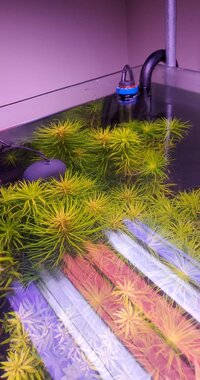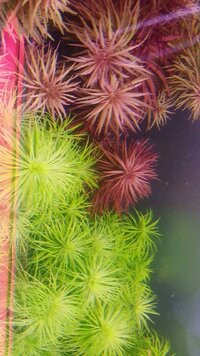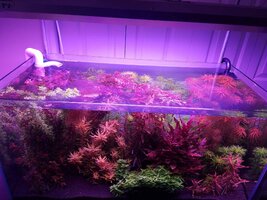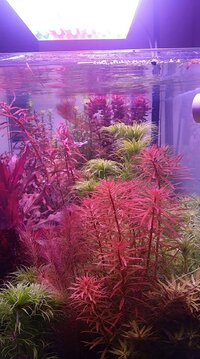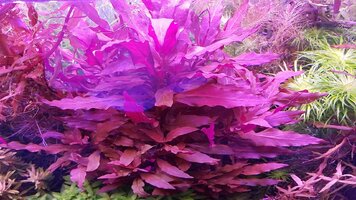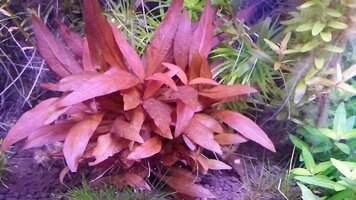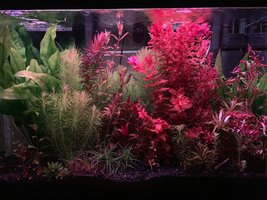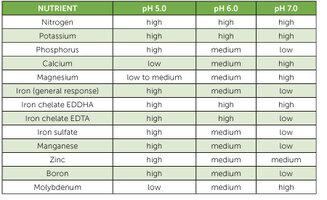Hi all,
Because it is only really planted tank keepers who add nitrogen as nitrate (NO3) I've struggled to find scientific references that look at the effects purely of nitrate nitrogen addition. There are some papers on the physical uptake of ions by root hairs, because a Limnobium sp. was the model plant used. <"Huimin, F., Xiaorong F., Miller, A. & Guohua X (2020) "Plant nitrogen uptake and assimilation: regulation of cellular pH homeostasis" Journal of Experimental Botany, 71(15) pp. 4380–4392">.
cheers Darrel
It could be <"molybdenum (Mo)">. I haven't ever done this very scientifically, with the original wastewater work it is <"plenty of everything">, and subsequently it has usually been in planted tanks with some livestock present and/or a <"commercial fertiliser mix">, with both urea and nitrate nitrogen.it could be that when NO3 is the main source of N, it might be wise to add bit more Mo to increase the Nitrogen uptake by those plants, where they have easy uptake of NH4 without the need for Mo.
Yes, I think you are right, it is the <"low hanging fruit argument">.also what if these floating plant are actually using most of the NH4 soon as its formed in the aquarium naturally? so weather you add 5,10,30,50 ppm NO3, they still try to go for available NH4 first before they start using the NO3?
Yes definitely, there is a large body of scientific research on phytoremediation <"using Limnobium laevigatum"> and a huge amount using floating plants more generally <"Hu, H., Xiang L., Shaohua W., & Chunping, Y (2020) "Sustainable livestock wastewater treatment via phytoremediation: Current status and future perspectives" Bioresource Technology, 315">this is how the Nitrogen cycle works in our aquarium and I strongly believe that these plants are great ammonia/ammonium remover.
I've thought about this in terms of the "Duckweed index" and I think it doesn't actually matter if leaf greeness is a measure of just ammonium nitrogen and leaf growth a measure of all fixed nitrogen. I'm not worried about the nitrate in terms of fish health and the plants are still depleting it.I have seen these plant take yellow color when NO3 is the main source of N in the water. they only obtained better color when the NO3 became lower. these floating plant might be good indicator for some nutrients but not all, they frequently obtained yellow growth which appear to look like that they are suffering from N deficiency even in presence of 50 ppm NO3.
Because it is only really planted tank keepers who add nitrogen as nitrate (NO3) I've struggled to find scientific references that look at the effects purely of nitrate nitrogen addition. There are some papers on the physical uptake of ions by root hairs, because a Limnobium sp. was the model plant used. <"Huimin, F., Xiaorong F., Miller, A. & Guohua X (2020) "Plant nitrogen uptake and assimilation: regulation of cellular pH homeostasis" Journal of Experimental Botany, 71(15) pp. 4380–4392">.
You definitely get instant greening with ammonia addition, possibly <"because of luxury uptake">?the paleness remain under the presence of all the nutrient at higher level. not all of them were pale, it was some leaves which looked normal and some leaves were still showing yellow color, soon as I added some NH4 the entire surface maintained green color. so there is something somewhere which could be related to struggle to use NO3 as the only source.
cheers Darrel


 Ive tried to qualify the statement by pairing it with "it seems", but still guilty. Mine didnt do well, but I shouldnt perpetuate a theory I have not tested better. Definitely could have been something else that caused it not to do well. Consider me duly corrected
Ive tried to qualify the statement by pairing it with "it seems", but still guilty. Mine didnt do well, but I shouldnt perpetuate a theory I have not tested better. Definitely could have been something else that caused it not to do well. Consider me duly corrected 

